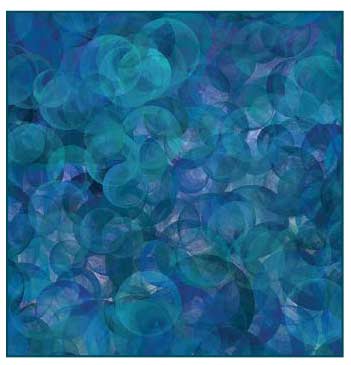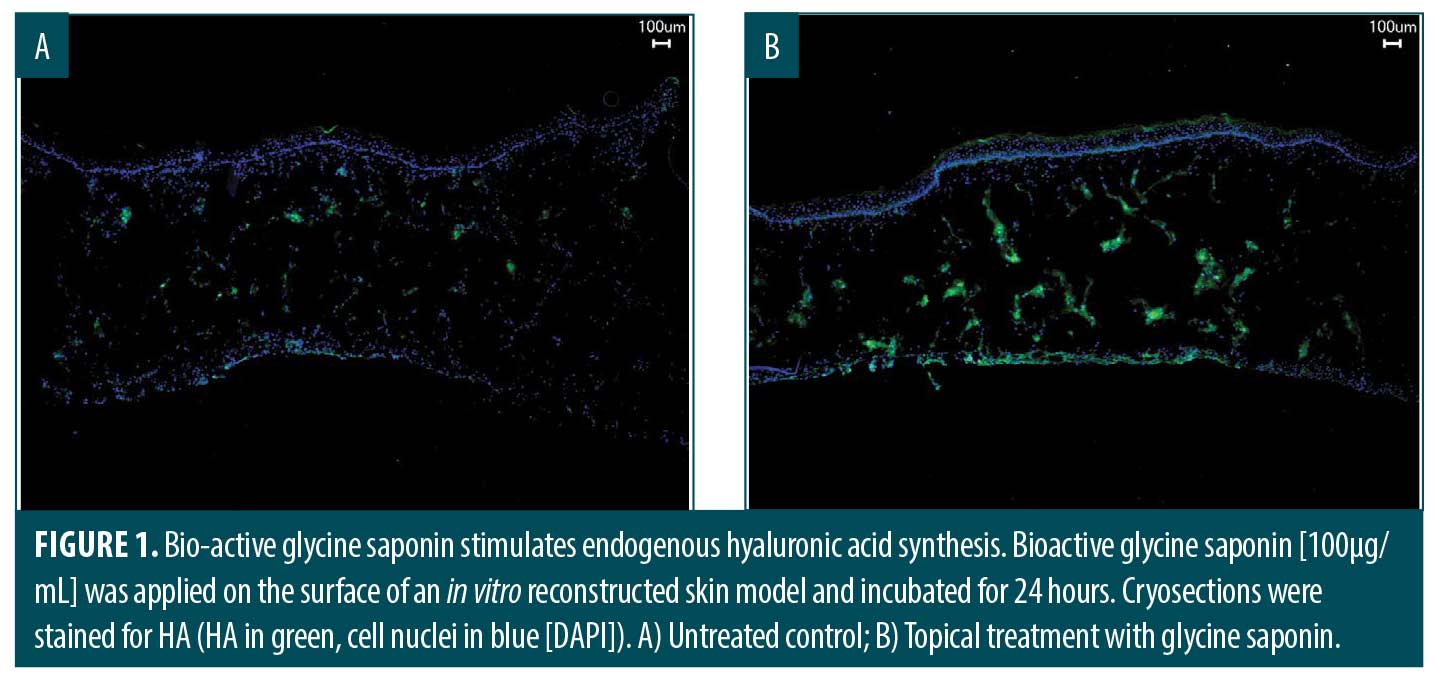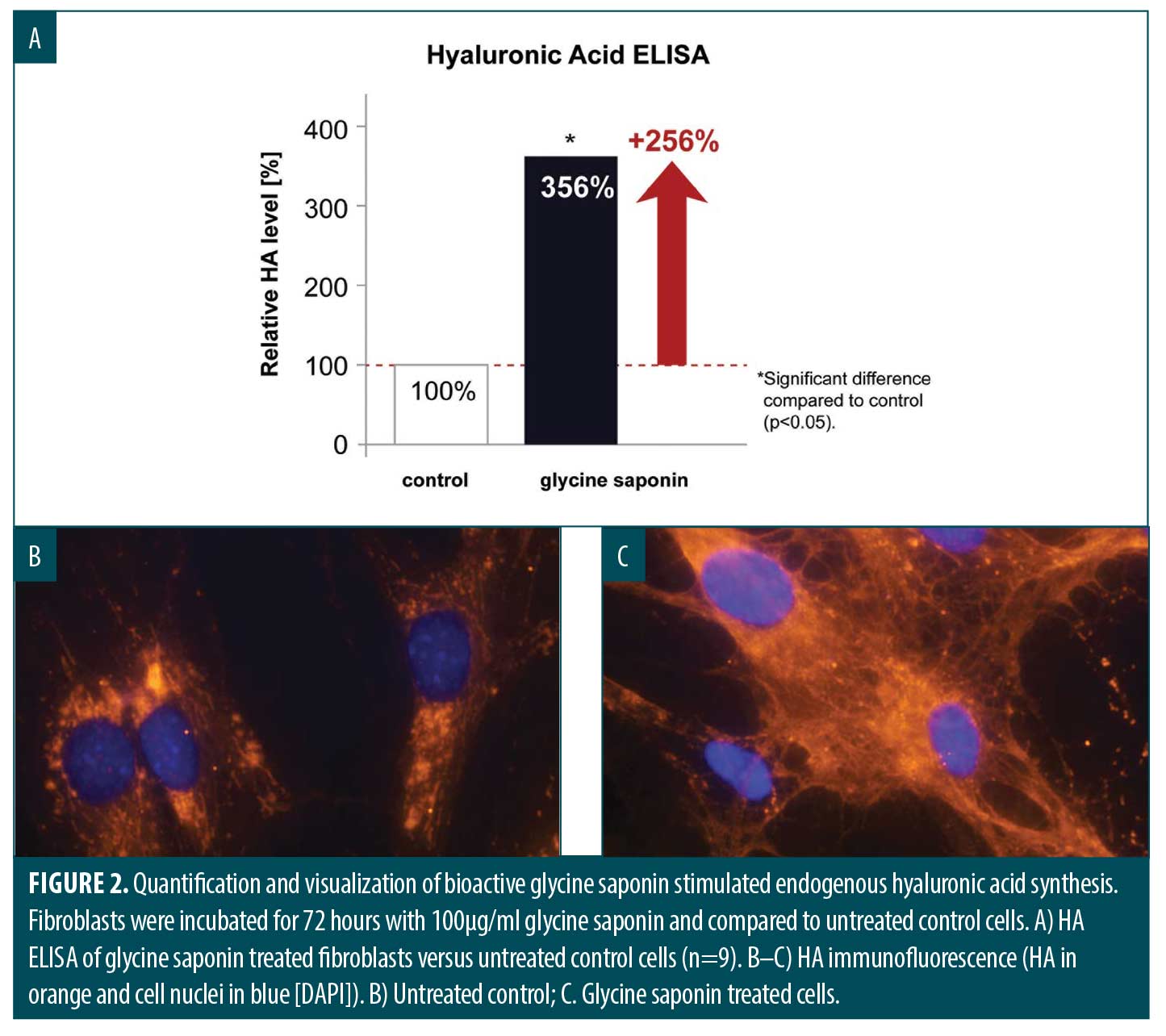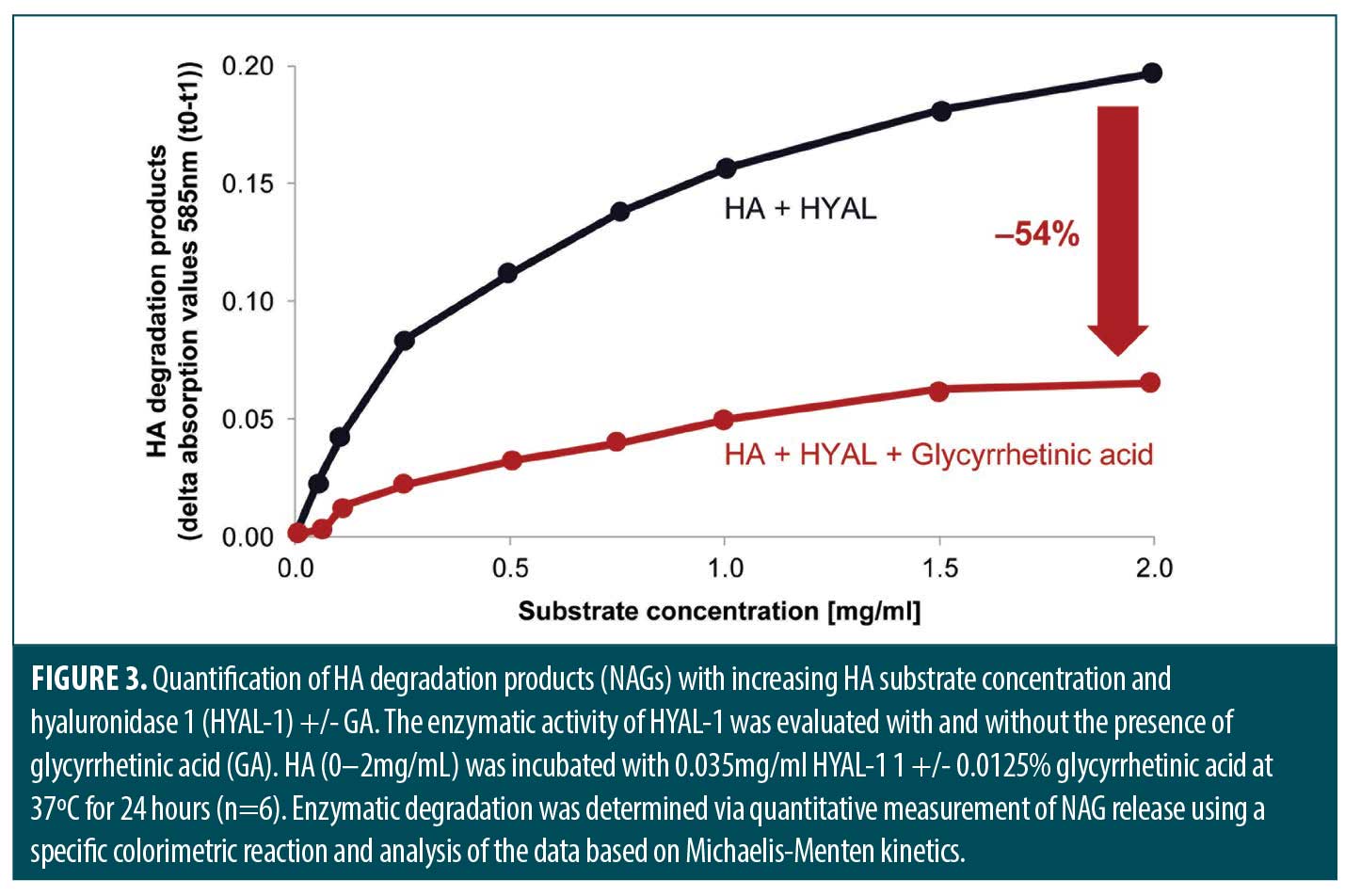 J Clin Aesthet Dermatol. 2024;17(3):48–51.
J Clin Aesthet Dermatol. 2024;17(3):48–51.
by Joshua Zeichner, MD; Edward (Ted) Lain, MD, MBA; Kavita Mariwalla, MD;
Tanja Bußmann, Dr; Julia M. Weise, Dr; Elisabeth Maaß; Andrea Krüger; Anne-Kathleen Schade; Frank Kirchner; and Zoe D. Draelos, MD
Dr. Zeichner is with the Department of Dermatology at Mount Sinai Hospital in New York, New York. Drs. Bussmann and Weise, Ms. Maass, Ms. Krüger, and Ms. Schade are with Research and Development at Beiersdorf AG in Hamburg, Germany. Dr. Lain is with Sanova Dermatology in Austin, Texas. Dr. Mariwalla is with Mariwalla Dermatology in West Islip, New York. Mr. Kirchner is with Beiersdorf Inc. in Florham Park, New Jersey. Dr. Draelos is with Dermatology Consulting Services, PLLC in High Point, North Carolina.
FUNDING: Funding for this article was provided by Beiersdorf.
DISCLOSURES: Dr. Zeichner has served as a consultant for Beiersdorf; Dr. Bussmann, Dr. Weiss, Ms. Maass, Ms. Krüger, Ms. Schade, and Mr. Kirchner are employees of Beiersdorf; Dr. Lain has served as a clinical trial investigator, consultant, advisor, and/or speaker for Beiersdorf, Pierre Fabre, L’Oreal, AbbVie, Galderma, Kenvue; Dr. Mariwalla has served as a consultant for Beiersdorf; Dr. Draelos has served as a trial investigator, consultant, advisor and/or speaker for Aveda, Beiersdorf, Estee Lauder, Galderma, La Roche Posay, L’Oreal, and SkinCeuticals.
ABSTRACT: Background. Hyaluronic acid (HA) is a unique molecule of the extracellular matrix with multiple biological activities. In skin, HA plays an essential role as a humectant, capable of binding up to 1,000 times its mass with water, providing skin with moisture and viscoelastic properties. HA concentration and synthesis decrease significantly in aging skin, due to exogenous and endogenous factors, including photoaging and HA metabolism. A key driver for HA degradation and reduced concentration is mediated via induction of reactive oxygen species (ROS) and other free radicals.
Objective. In this study, we evaluate antioxidant ingredients essential in the development of next-generation HA-based topical formulations aimed at leveraging HA’s ability to maximize anti-aging properties.
Methods. Two antioxidants, glycine saponin (Glycine soja germ extract) and glycyrrhetinic acid (enoxolone), were evaluated for stimulation of endogenous HA production and inhibition of endogenous hyaluronidase activity, respectively.
Results. The antioxidant glycine saponin induced endogenous HA synthesis in fibroblasts, while the antioxidant glycyrrhetinic acid decreased the degradation rate of HA by 54 percent.
Conclusion. While HA has been included in numerous topical skin products, critical aspects of HA metabolism, especially in aging skin, have often been overlooked, including decreases in HA synthesis with increasing age, and increases in HA degradation mediated by exogenously induced reactive oxygen species and free radicals and increased enzymatic degradation by endogenous hyaluronidases. Here, we describe a unique approach to inclusion of two antioxidants essential for the development of the next generation of antioxidant complex-based topical skin formulations to limit the signs of aging skin.
Keywords: Skincare, moisturizers, hyaluronic acid, antioxidants, cosmeceutical
Introduction
Advances in aging and photodamaged skin have shown that the process is a result of extrinsic and intrinsic properties.1, 2 One of the main biomolecules involved in skin moisture and viscoelastic properties is hyaluronic acid (HA), which has been studied since the 1970s.3–5 Decreases in production and increases in enzymatic degradation of HA result in myofascial rigidity, visual aging signs, dryness, and wrinkles secondarily to the loss of hydration.6–8 The glycosaminoglycan HA is a unique molecule that plays a crucial role in skin hydration, with the ability to hold up to 1,000 times its mass of water, a key component of its functional role of maintaining softness with elasticity and structure in skin.9–11 HA is classified as a humectant, which hydrates the stratum corneum and the epidermis by drawing water from the dermis bringing both moisture and plumpness to the epidermal layers.1,11,12
HA is produced by epidermal keratinocytes and dermal fibroblasts via HA synthases HAS-1, -2, -3.6,9,13–15 Reduced HA synthesis and increased degradation mainly via the hyaluronidases HYAL-1 and -2, are key drivers of alterations of skin hydration, turgor and architecture.6,14,16,17 This change in HA homeostasis is driven both by photodamage caused by ultraviolet (UV) radiation and alterations in HA metabolism directly associated with age.13,14,16 With increased age, skin has less ability to maintain HA homeostasis mediated by reduction in HA synthesis and increased degradation via hyaluronidases.13,16,18
Reactive oxygen species (ROS) and other free radicals are a major driving force behind HA catabolism associated with photo- and chronological aging.19 ROS and other free radicals are generated in the skin, initiated by both endogenous (metabolic-generated)19,20 and exogenous (e.g., solar radiation or pollution) factors, leading to initiation of a signaling cascade resulting in down-regulation of anabolic reactions and induction of catabolic reactions, culminating with an overall decrease in HA concentration in skin. One approach to addressing the damaging effects of ROS on the skin is the use of supplemental antioxidants and radical quenchers in topical moisturizers to support the skin’s endogenous system. While several exogenous antioxidants and free radical scavengers (vitamin C, vitamin E, etc.) have been utilized in topical formulations, novel antioxidants (glycine saponin, glycyrrhetinic acid, etc.) have been identified as potent antioxidants with additional biological activity that can be beneficial to overall skin health and HA homeostasis.21–24
We sought to evaluate the effect of two antioxidants, glycine saponin and glycyrrhetinic acid (GA), on HA homeostasis, including induction of endogenous HA in skin cells and inhibition of a key HA degradative enzyme, HYAL-1.
Methods
Endogenous HA stimulation assay. Bioactive glycine saponin—a Glycine soja germ extract containing 14% saponins as well as 10% to 12% isoflavones was applied on the surface of an in vitro reconstructed skin model [100µg/mL] and incubated for 24 hours, followed by cryosectioning at 6µm. Additionally, dermal fibroblasts were incubated for 72 hours with 100µg/ml glycine saponin and compared to untreated control cells. Skin models and cells were immunostained with biotinylated HA binding protein and cell nuclei stain 4’, 6-diamidino-2-phenylindole (DAPI). HA levels in the fibroblast supernatants were quantified via HA ELISA (n=9).
Hyaluronidase inhibition assay. The enzymatic kinetics of HYAL-1 were evaluated with and without the presence of glycyrrhetinic acid (enoxolone). HA (0-2mg/ml) was incubated with 0.035mg/ml HYAL-1 +/- 0.0125% GA at 37ºC for 24 hours (n=6). Enzymatic degradation was determined via quantitative measurement of N-acetylglucosamine (NAG) release using a specific colorimetric reaction according to Reissig et al,25 and analysis of the data based on Michaelis-Menten kinetics. For the quantification of the HYAL-1 enzyme inhibition the relative change of Vmax compared to solvent control was calculated.
Statistical analysis. Shapiro Wilk’s test for checking normal distribution was performed. If the hypothesis of normal distributed data was rejected, the Blom-transformed ranks of the original data were analyzed, otherwise original data. Depending on the structure of the data paired t-test or Student’s t-test was used for group comparison. All hypothesis tests were two-sided with significance level α=5% and were done with statistical software SAS 9.4 for Windows.
Results
Induction of endogenous HA synthesis (via glycine saponin). As previously described, a key contributor to reduction of available HA in skin with increased age, is a decrease of synthesis by keratinocytes and fibroblasts combined with an increase in the level and activity of HA degrading enzymes (hyaluronidases).16,26 Saponins are amphiphilic glycosidic molecules produced by numerous plants with a role in nutrition and health.21 Glycine saponin demonstrated antioxidant activity and stimulates endogenous HA synthesis.24 The bioactivity of glycine saponin was evaluated for its ability to stimulate production of endogenous HA in an in vitro reconstructed skin model and in fibroblasts. The increase in HA production at 24 hours of topical treatment with glycine saponin can be visualized throughout the skin model layers (Figure 1B). In fibroblasts, the incubation of glycine saponin for 72 hours resulted in an increase of HA, 256 percent above untreated controls cells (=100%) (Figure 2A), which can be visualized intra- and extracellular (Figure 2C).
Inhibition of endogenous hyaluronidase activity (via GA). The metabolism of HA is highly dynamic leading to a half-life of epidermal HA of approximately 2 to 3 hours and approximately one day for dermal HA.1,18 The main metabolic driver of HA degradation is the enzymatic activity of the six hyaluronidases, with HYAL-1 and -2 being the most active in skin.18 GA is a key ingredient of many topical formulations, with biological activity including antioxidant and DNA repair properties.23,27 We investigated the inhibitory effects of GA on HYAL-1 activity. Addition of GA to the enzymatic reaction of HA and HYAL-1 resulted in a significant decrease of the degradation rate of HA by up to 54 percent (Figure 3).
Discussion
HA has shown a wide range of pharmacological activity and plays a multifactorial role in biologic processes and maintaining homeostasis.13,15,16 Many cosmetic products use HA as their foundation due to its known ability to replenish moisture in the skin and hold water for a long period of time, creating smoother more radiant skin.15,16 This constant hydration slows down wrinkle formation and improves deep fine lines in already developed wrinkles while increasing cell regeneration and stimulating collagen production.1,9,16,28 One of the major deficiencies in currently available topical HA products is the limited effects of these products on addressing the impact of ROS and other free radicals, and the corresponding impact on HA homeostasis.
In order to develop the next generation of HA-based moisturization products, it is imperative that multiple aspects of HA biology and HA metabolism are taken into account when choosing formulation ingredients, including: 1) ingredients that stimulate the endogenous production of HA to shift towards homeostasis; 2) antioxidants to aid in neutralization of extrinsically induced ROS and other free radicals; and 3) ingredients that reduce hyaluronidase enzymatic degradation of both endogenous and exogenous HA.
The inclusion of antioxidants to block against the induction of ROS and free-radical formation, caused by damaging ultraviolet radiation and other environmental stimuli, is a growing trend for topical formulations including moisturizing creams/lotions and even sunscreens;13,29 however, all antioxidants are not the same, and some possess unique multifunctionality, which should be considered. Glycine saponin isolated from soybean has strong antioxidant properties and as demonstrated in a skin model and fibroblasts, can stimulate the endogenous production of HA (Figures 1 and 2). Additionally,9,16 GA has DNA repair properties to complement its inhibitory effects on the critical HA degrading enzyme, HYAL-1 (Figure 3), one major enzyme associated with increases of HA degradation in aging skin.18 Taken together, the inclusion of these two antioxidant ingredients in novel HA-based formulations could adequately address the current gaps in HA-based formulations, thus maximizing the biological effects of HA to limit the signs of aging skin.
Conclusion
HA is a unique molecule that plays a crucial role in skin hydration and the skin’s extracellular structure. While HA has been included in numerous topical skin products, critical aspects of HA metabolism, especially in aging skin, have often been overlooked. These include decreases in HA synthesis with increasing age and increases in HA degradation mediated by exogenously induced reactive oxygen species and free radicals and increased enzymatic degradation by endogenous hyaluronidases. Here we describe a unique approach to inclusion of two antioxidant ingredients, with dual functionality, essential for the development of the next generation of HA and antioxidant complex-based topical skin formulations to improve overall skin health and appearance.
References
- Bravo B, Correia P, Goncalves Junior JE, et al. Benefits of topical hyaluronic acid for skin quality and signs of skin aging: From literature review to clinical evidence. Dermatol Ther. 2022 Dec;35(12):e15903.
- Lee DH, Oh JH, Chung JH. Glycosaminoglycan and proteoglycan in skin aging. J Dermatol Sci. 2016 Sep;83(3):174–181.
- Galvez-Martin P, Soto-Fernandez C, Romero-Rueda J, et al. A novel hyaluronic acid matrix ingredient with regenerative, anti-aging and antioxidant capacity. Int J Mol Sci. 2023 Mar 1;24(5).
- Juncan AM, Moisa DG, Santini A, et al. Advantages of hyaluronic acid and its combination with other bioactive ingredients in cosmeceuticals. Molecules. 2021 Jul 22;26(15).
- Gupta RC, Lall R, Srivastava A, et al. Hyaluronic acid: Molecular mechanisms and therapeutic trajectory. Front Vet Sci. 2019;6:192.
- Papakonstantinou E, Roth M, Karakiulakis G. Hyaluronic acid: A key molecule in skin aging. Dermatoendocrinol. 2012 Jul 1;4(3):253–258.
- Tzellos TG, Klagas I, Vahtsevanos K, et al. Extrinsic ageing in the human skin is associated with alterations in the expression of hyaluronic acid and its metabolizing enzymes. Exp Dermatol. 2009 Dec;18(12):1028–1035.
- Tzellos TG, Sinopidis X, Kyrgidis A, et al. Differential hyaluronan homeostasis and expression of proteoglycans in juvenile and adult human skin. J Dermatol Sci. 2011 Jan;61(1):69–72.
- Widgerow AD, Ziegler ME, Garruto JA, et al. Designing topical hyaluronic acid technology-Size does matter. J Cosmet Dermatol. 2022 Jul;21(7):2865–2870.
- Marinho A, Nunes C, Reis S. Hyaluronic acid: A key ingredient in the therapy of inflammation. Biomolecules. 2021 Oct 15;11(10).
- Draelos ZD, Diaz I, Namkoong J, et al. Efficacy evaluation of a topical hyaluronic acid serum in facial photoaging. Dermatol Ther (Heidelb). 2021 Aug;11(4):1385–1394.
- Humzah D, Romagnoli M, Tateo A, et al. Hyaluronic acid: a strategic molecule for rejuvenating procedures. Esperienze Dermatologiche. 2020;22(4):36–41.
- Draelos ZD. Revisiting the skin health and beauty pyramid: A clinically based guide to selecting topical skincare products. J Drugs Dermatol. 2021 Jun 1;20(6):695–699.
- Averbeck M, Gebhardt CA, Voigt S, et al. Differential regulation of hyaluronan metabolism in the epidermal and dermal compartments of human skin by UVB irradiation. J Invest Dermatol. 2007 Mar;127(3):687–697.
- Bukhari SNA, Roswandi NL, Waqas M, et al. Hyaluronic acid, a promising skin rejuvenating biomedicine: A review of recent updates and pre-clinical and clinical investigations on cosmetic and nutricosmetic effects. Int J Biol Macromol. 2018 Dec;120(Pt B):1682–1695.
- Makino ET, Huang PC, Emmerich T, et al. Efficacy and tolerability of cosmetic serums enriched with five forms of hyaluronic acid as part of biweekly diamond tip microdermabrasion treatments for facial skin dryness and age-associated features. Clin Cosmet Investig Dermatol. 2023;16:1123–1134.
- Nakab L, Hee CK, Guetta O. Improvements in skin quality biological markers in skin explants using hyaluronic acid filler VYC-12L. Plast Reconstr Surg Glob Open. 2020 Mar;8(3):e2723.
- Anderegg U, Simon J, Averbeck M. More than just a filler-the role of hyaluronan for skin homeostasis. Exp Dermatol. 2014;23(5):295–303.
- Berdiaki A, Neagu M, Spyridaki I, et al. Hyaluronan and reactive oxygen species signaling-novel cues from the matrix? Antioxidants (Basel). 2023 Mar 28;12(4).
- Krutmann J, Bouloc A, Sore G, et al. The skin aging exposome. J Dermatol Sci. 2017 Mar;85(3):152–161.
- Nichifor M. Role of hydrophobic associations in self-healing hydrogels based on amphiphilic polysaccharides. Polymers (Basel). 2023 Feb 21;15(5).
- Lin CA, Ho HM, Venkatesan P, et al. Hyaluronic acid-glycine-cholesterol conjugate-based nanoemulsion as a potent vaccine adjuvant for T cell-mediated immunity. Pharmaceutics. 2021 Sep 27;13(10).
- Rigel DS, Lim HW, Draelos ZD, et al. Photoprotection for all: Current gaps and opportunities. J Am Acad Dermatol. 2022 Mar;86(3S):S18–S26.
- Sudel KM, Venzke K, Mielke H, Bet al. Novel aspects of intrinsic and extrinsic aging of human skin: beneficial effects of soy extract. Photochem Photobiol. 2005 May-Jun;81(3):581–587.
- Reissig JL, Storminger JL, Leloir LF. A modified colorimetric method for the estimation of N-acetylamino sugars. J Biol Chem. 1955 Dec;217(2):959–966.
- Mazzuco A. Hyaluronic acid: Evaluations of efficacy with different molecular weights. Int J Chem Res. 2018;1(1):13–8.
- Baldi M, Reynaud R, Lefevre F, et al. Synergistic use of bioactive agents for the management of different skin conditions: An overview of biological activities. Eur Rev Med Pharmacol Sci. 2023 Feb;27(4):1450–1466.
- Kang HY, Lee JW, Papaccio F, et al. Alterations of the pigmentation system in the aging process. Pigment Cell Melanoma Res. 2021 Jul;34(4):800–813.
- Ballance WC, Qin EC, Chung HJ, et al. Reactive oxygen species-responsive drug delivery systems for the treatment of neurodegenerative diseases. Biomaterials. 2019 Oct;217:119292.




